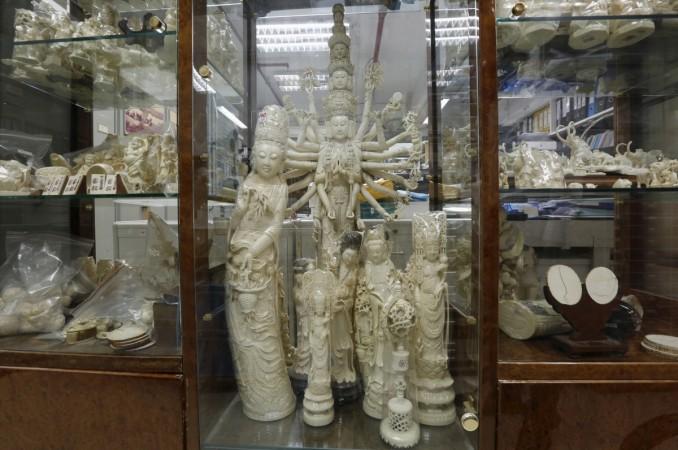
China recently announced a timetable to enact a near-total ban on domestic commercial sales of ivory by December 31, 2017. Conservationists, especially Africans, around the world hailed the decision as a "game-changer" that will bring relief for elephants.
World Environment Day 2016: Illegal mining, poaching, logging is worth up to $258 billion
China and the US - being the biggest end-market for ivory – are collaborating to ban ivory trade after making similar commitments two years back.
In September 2015, US President Barack Obama and Chinese President Xi Jinping recognised that legal domestic ivory markets continued to support the illegal killing of animals and regretted that over the past decade – when an estimated 20 percent of Africa's remaining elephants were killed with as many as 20,000-30,000 being killed annually – elephant poaching had continued at unsustainable levels.
In June 2016, the US ended its domestic ivory trade as new regulations were issued in the country to shut down the commercial elephant ivory trade within its border.
That was the US. Even though China has officially pledged to help to prevent the illegal killing of elephants and has taken steps to stop the import of illegal ivory, Chinese Ministry of Culture in 2006 designated ivory carving a national intangible cultural heritage. The government has continued to support the domestic sale and use of 'legal' ivory — and occasionally buys global stockpiles of confiscated ivory to sell on to its carvers.
There are 34 officially designated ivory manufacturers in China and 130 licensed dealers who sell tonnes of legal ivory items to shoppers. Interestingly, the Chinese government has also argued that there are enough elephants in Africa to support regular — and legal — sustainable trade to meet demand.
African ivory is highly sought after in China where the Chinese see it as a status symbol and just 1 kg of ivory sells for as high as $1,100. China permits the resale of ivory bought before the ban and also has a stockpile purchased with CITES approval in 2008, which it releases for sale with certification.
After the United Nations banned trade in elephant ivory in 1989, the Convention on International Trade in Endangered Species of Wild Fauna and Flora (CITES), which was set up in 1975, has overseen the ban, allowing only one-off sales from four African nations – Botswana, Namibia, South Africa and Zimbabwe – whose elephant populations were judged to have stabilised.
According to a UN Development Programme, elephant poaching is driven primarily by the illegal trade in ivory, which fuels part of the roughly $23 billion in illegal wildlife trafficking each year – one of the five most lucrative illegal trades in the world.
A WWF campaign group says now around 415,000 elephants remain.
Experts argue that one option China has after the ban is to buy back all the stockpile in the country and either keep it in museums or crush it all. If China were to take such a step, it may cost the country anywhere near $1 billion, according to rough estimates.
However, ivory carving being part of China's intangible cultural heritage where people use it for various medicinal purposes and the country's current regulations aiming to protect the newly established market economy, it's easier said than done that legal and registered ivory carvers and suppliers will be shut down so easily.
At the same time, environmental groups doubt China's intention to strictly implement the ban as they say elephant ivory is a booming black-market commodity worth hundreds of millions of dollars and giving China the right to import more ivory legally will simply fuel the black market. They also add that CITES officials are bowing before China and ignoring the advice of their own wildlife experts.

















